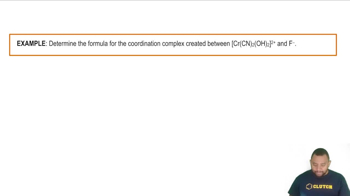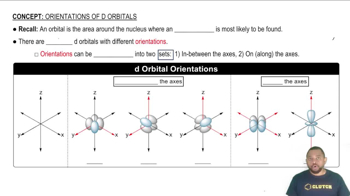Here are the essential concepts you must grasp in order to answer the question correctly.
Coordination Complexes
Coordination complexes consist of a central metal atom or ion bonded to surrounding molecules or ions, known as ligands. The nature of these bonds and the arrangement of ligands around the metal center can significantly influence the properties of the complex, including its magnetic behavior.
Recommended video:
Coordination Complexes Example
Magnetism in Coordination Complexes
Coordination complexes can be classified as diamagnetic or paramagnetic based on the presence of unpaired electrons. Diamagnetic complexes have all electrons paired, resulting in no net magnetic moment, while paramagnetic complexes contain unpaired electrons, leading to a net magnetic moment and attraction to magnetic fields.
Recommended video:
Coordination Complexes Example
Electron Configuration and d-Orbitals
The electron configuration of the central metal ion, particularly the distribution of electrons in its d-orbitals, is crucial for determining the magnetic properties of coordination complexes. Transition metals can exhibit different oxidation states and coordination geometries, affecting the number of unpaired electrons and thus the complex's magnetic characteristics.
Recommended video:

 Verified step by step guidance
Verified step by step guidance

